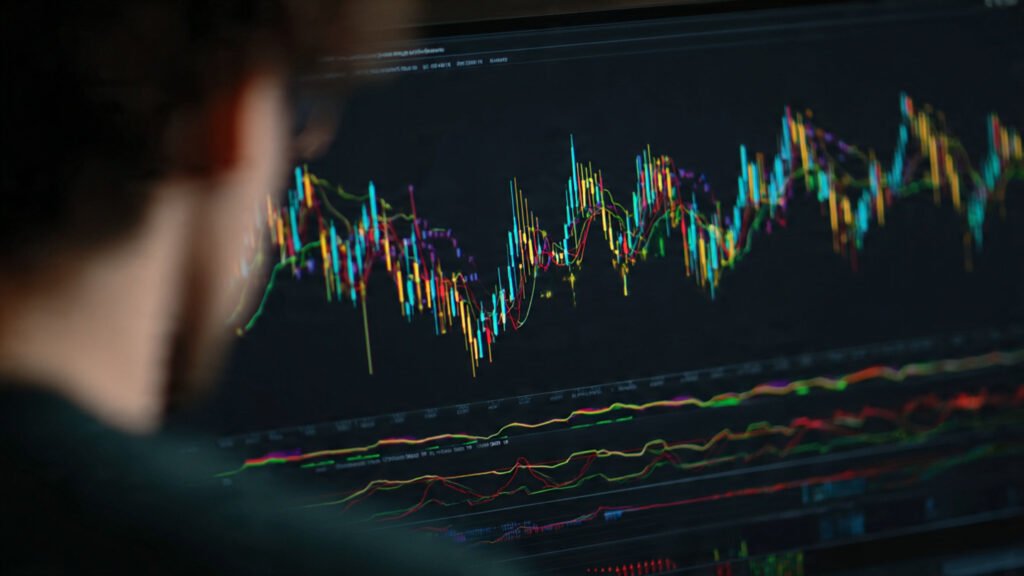The landscape of day trading for retail investors is undergoing a seismic shift that promises to democratize market access like never before. For years, smaller retail investors have faced significant barriers when attempting to engage in day trading activities—from stringent capital requirements to complex regulatory frameworks. However, 2025 marks a turning point where technological innovation, regulatory reform, and competitive market forces are converging to make day trading substantially more accessible. This transformation isn’t just about lowering barriers; it’s about fundamentally reshaping how everyday investors can participate in the financial markets, potentially levelling the playing field between institutional traders and individual market participants.
Current Barriers in Day Trading
The Pattern Day Trader Rule: A Major Obstacle
The Pattern Day Trader (PDT) rule has long been the most significant hurdle for smaller retail investors looking to engage in day trading. Established by FINRA (Financial Industry Regulatory Authority), this regulation requires anyone executing four or more day trades within five business days to maintain a minimum account balance of $25,000. This substantial capital requirement has effectively locked out millions of aspiring traders who lack the financial resources to meet this threshold.
For context, a day trade is defined as buying and selling (or selling and buying) the same security on the same trading day in a margin account. The rule was originally implemented to protect novice traders from the risks associated with frequent trading, but critics argue it creates an unequal system that favours wealthy individuals while restricting opportunities for smaller investors.
High Commission Costs and Platform Limitations
Beyond regulatory barriers, retail investors have historically faced elevated trading costs that made day trading economically unviable. Just a decade ago, commission fees ranging from $5 to $10 per trade meant that active traders needed substantial profits just to break even. Additionally, many trading platforms lacked the sophisticated tools, real-time data, and execution speeds that professional traders enjoyed, creating a technological disadvantage.
The spread between bid and ask prices, slippage during execution, and limited access to pre-market and after-hours trading further compounded these challenges. These combined factors meant that successful day trading for retail investors required not only skill and knowledge but also significant capital and access to premium services.
Revolutionary Changes Making Day Trading More Accessible
Regulatory Reform and Capital Requirement Adjustments
The most significant development transforming day trading for retail investors involves proposed regulatory reforms aimed at reducing or restructuring the PDT rule’s capital requirements. Several brokerage firms and industry advocates have petitioned FINRA to modernise these regulations, arguing that improved risk management tools and investor education programs can provide adequate protection without maintaining the $25,000 threshold.
Some brokerages have introduced innovative workarounds, such as cash accounts that aren’t subject to the PDT rule, allowing traders to execute day trades without the minimum balance requirement—though with certain limitations. Additionally, offshore brokerages and international platforms operating under different regulatory frameworks have emerged, offering retail investors alternative pathways to engage in intraday trading activities.
The Securities and Exchange Commission (SEC) has also indicated openness to revisiting market structure regulations that disproportionately impact smaller traders. These discussions suggest that within the next 12-24 months, we may see meaningful regulatory adjustments that dramatically expand access to day trading for individuals with more modest capital bases.
Zero-Commission Trading Revolution

The advent of commission-free trading platforms has fundamentally altered the economics of day trading for retail investors. Companies like Robinhood pioneered the zero-commission model in 2013, forcing established brokerages like Charles Schwab, TD Ameritrade, E*TRADE, and Fidelity to eliminate their trading fees to remain competitive.
This shift means that retail investors can now execute hundreds or even thousands of trades annually without incurring the commission costs that would have been prohibitive just years ago. The elimination of this friction has particularly benefited day traders who rely on high-frequency strategies and need to capture small price movements across multiple trades.
However, it’s important to understand that “zero commission” doesn’t mean trading is entirely free. Brokerages generate revenue through payment for order flow (PFOF), interest on uninvested cash, premium services, and securities lending. While these revenue models have sparked regulatory scrutiny, they’ve undeniably made day trading more accessible to everyday investors.
Advanced Technology and Trading Tools
Modern trading platforms now offer retail investors access to institutional-grade tools that were previously reserved for professional traders. Real-time Level II market data, advanced charting capabilities, algorithmic trading features, and lightning-fast execution speeds are now available through user-friendly mobile and desktop applications.
Artificial intelligence and machine learning technologies are being integrated into trading platforms, providing retail investors with sophisticated pattern recognition, sentiment analysis, and risk management tools. Some platforms offer automated trading bots that can execute strategies based on predefined criteria, allowing less experienced traders to benefit from systematic approaches.
Educational resources have also proliferated, with brokerages providing comprehensive tutorials, virtual trading simulators, and community forums where retail investors can develop their day trading skills without risking real capital. This democratisation of knowledge helps level the educational playing field that once favoured institutional participants.
Emerging Platforms Targeting Smaller Retail Investors
Fractional Share Trading and Micro-Investing
The introduction of fractional share trading represents another breakthrough for day trading for retail investors with limited capital. Previously, investors needed sufficient funds to purchase whole shares of expensive stocks—a single share of companies like Amazon, Alphabet, or Berkshire Hathaway could cost hundreds or thousands of dollars.
Fractional shares allow retail investors to purchase portions of stocks, enabling portfolio diversification and access to high-value securities with minimal capital. This innovation is particularly significant for day trading, as it allows traders to deploy smaller position sizes while maintaining proper risk management practices.
Platforms specifically designed for micro-investing have gained tremendous popularity, attracting millions of users who previously felt excluded from active trading. These services combine fractional shares with intuitive interfaces and educational content, creating an onboarding experience that demystifies day trading for newcomers.
Cryptocurrency and 24/7 Trading Markets
The explosive growth of cryptocurrency markets has provided retail investors with alternative venues for day trading that operate outside traditional regulatory frameworks. Unlike stock markets with limited trading hours, crypto exchanges function 24/7, offering unprecedented flexibility for traders with day jobs or unconventional schedules.
Many cryptocurrency platforms have no PDT rule equivalent and allow trading with minimal capital requirements. The high volatility characteristic of crypto markets creates abundant intraday trading opportunities, though this comes with correspondingly elevated risk levels.
Decentralised finance (DeFi) protocols are further expanding possibilities, enabling retail investors to engage in sophisticated trading strategies, including leveraged positions and derivatives trading, without the gatekeeping traditionally imposed by centralised institutions. While regulatory clarity remains evolving in this space, the innovation occurring in crypto markets is influencing traditional finance to become more accessible.
Social Trading and Copy Trading Features
Social trading platforms represent an innovative approach to making day trading for retail investors more accessible by allowing less experienced traders to observe and replicate the strategies of successful market participants. These platforms create transparent environments where traders can share their performance metrics, strategies, and real-time trading decisions.
Copy trading functionality enables retail investors to automatically mirror the trades of experienced day traders, essentially outsourcing the decision-making process while maintaining control over risk parameters. This approach provides educational value as users observe the reasoning behind various trading decisions while potentially generating returns.
Community-driven platforms also foster collaborative learning environments where retail investors can discuss market conditions, share analysis, and collectively improve their day trading skills. This social dimension addresses the isolation that many individual traders experience and creates support networks that enhance long-term sustainability.
Risk Management Considerations for New Day Traders
Understanding Leverage and Margin Trading
As day trading for retail investors becomes more accessible, understanding the risks associated with leverage and margin becomes critically important. Margin accounts allow traders to borrow funds to increase their buying power, potentially amplifying both gains and losses. While leverage can enhance returns on successful trades, it can also lead to devastating losses that exceed the initial investment.
Retail investors new to day trading should approach leverage with extreme caution, starting with cash accounts or minimal leverage ratios until they develop consistent profitability and risk management discipline. The accessibility of margin trading through modern platforms doesn’t diminish its inherent risks—in fact, ease of access may create false confidence among inexperienced traders.
Proper position sizing, stop-loss implementation, and risk-per-trade limitations are essential practices that separate sustainable day trading from gambling. Professional traders typically risk no more than 1-2% of their account balance on any single trade, a discipline that protects against catastrophic drawdowns.
Emotional Discipline and Trading Psychology

The psychological demands of day trading represent challenges that technology and regulatory reform cannot solve. The rapid pace of intraday markets, the emotional impact of wins and losses, and the temptation to overtrade create psychological pressures that undermine many traders’ success.
Retail investors entering day trading must develop emotional discipline, including the ability to follow their trading plan consistently, accept losses without revenge trading, and resist the fear of missing out (FOMO) that drives impulsive decisions. The accessibility of trading platforms through smartphones creates constant temptation to monitor positions and make reactive decisions based on short-term price movements.
Successful day traders often establish strict routines, including defined trading hours, maximum daily loss limits, and mandatory breaks after significant wins or losses. These structural approaches help mitigate the emotional volatility inherent in active trading and improve long-term consistency.
Educational Resources and Skill Development
Free and Premium Learning Platforms
The democratisation of day trading for retail investors extends beyond platform access to encompass comprehensive educational resources. Numerous free and premium courses now teach technical analysis, fundamental analysis, risk management, and trading psychology specifically tailored to intraday trading strategies.
YouTube channels, podcasts, and blogs created by experienced traders provide ongoing education and market commentary that help retail investors continuously develop their skills. Many brokerages offer certification programs and structured learning paths that guide beginners through progressively advanced concepts.
Simulated trading environments allow aspiring day traders to practice strategies with virtual money, building experience and confidence before risking actual capital. These paper trading platforms replicate real market conditions, including order execution delays and slippage, providing realistic training environments.
Community Support and Mentorship
Trading communities, both online and in-person, create networks where retail investors can share experiences, strategies, and emotional support. Discord servers, Reddit forums, and specialised trading communities offer real-time interaction during market hours, fostering collaborative learning environments.
Mentorship programs connect experienced day traders with newcomers, providing personalised guidance that accelerates skill development. While some mentorship programs charge fees, many successful traders freely share knowledge through content creation and community engagement, motivated by the desire to support the trading community.
The transparency now possible through verified track records and real-time trade sharing helps retail investors identify genuinely successful traders to learn from, rather than self-proclaimed “gurus” selling expensive courses with dubious results.
Tax Implications and Regulatory Compliance
Understanding Day Trader Tax Status
As day trading for retail investors becomes more prevalent, understanding tax implications becomes essential. In the United States, traders may qualify for “trader tax status” (TTS) if they meet specific IRS criteria, including substantial trading activity, continuity and regularity of trades, and the intention to profit from short-term market movements rather than long-term appreciation.
Achieving TTS provides significant tax advantages, including the ability to deduct trading-related expenses, avoid wash sale rule limitations, and potentially elect mark-to-market accounting that allows carrying losses forward without limitation. However, qualifying for this status requires meeting stringent requirements and maintaining meticulous records.
Retail investors engaged in day trading must also understand short-term capital gains taxation, which applies to positions held less than one year and is taxed at ordinary income rates rather than the preferential long-term capital gains rates. This tax treatment significantly impacts net profitability and should factor into strategy development.
Recordkeeping and Reporting Requirements
Active day traders must maintain comprehensive transaction records, including entry and exit prices, dates, commissions, and the reasoning behind each trade. These records are essential for tax preparation, strategy evaluation, and regulatory compliance.
Various software solutions now automate trade tracking and tax reporting for retail investors, integrating directly with brokerage accounts to generate reports compatible with tax preparation software. These tools calculate realised and unrealised gains, track wash sales, and generate the documentation needed for accurate tax filing.
Understanding reporting requirements specific to different account types, including traditional IRAs, Roth IRAs, and taxable accounts, helps retail investors optimise their day trading activities from a tax perspective while maintaining compliance with applicable regulations.
The Future Landscape of Retail Day Trading
Continued Technological Innovation
The trajectory of day trading for retail investors points toward continued technological advancement that further reduces barriers and enhances capabilities. Quantum computing applications in market analysis, improved artificial intelligence for pattern recognition, and blockchain-based settlement systems promise to create even more efficient and accessible trading environments.
Virtual reality and augmented reality technologies may revolutionise how traders visualise and interact with market data, creating immersive trading experiences that enhance decision-making. Voice-activated trading and natural language processing could allow retail investors to execute complex strategies through conversational interfaces.
The integration of traditional finance with decentralised finance protocols may create hybrid platforms that combine regulatory protection with the innovation and accessibility characteristics of crypto markets, offering retail investors the best aspects of both ecosystems.
Regulatory Evolution and Investor Protection
As day trading for retail investors expands, regulatory frameworks will continue evolving to balance accessibility with investor protection. Future regulations may incorporate more sophisticated risk assessment tools that personalise trading limitations based on individual experience levels, knowledge assessments, and demonstrated competency rather than blanket capital requirements.
Enhanced transparency requirements around payment for order flow, execution quality, and potential conflicts of interest will help retail investors make informed decisions about which platforms best serve their day trading objectives. Standardised performance reporting and risk disclosures will create clearer comparisons across competing services.
The ongoing dialogue between industry participants, regulators, and investor advocates will shape policies that maximise the benefits of accessible day trading while mitigating the risks of speculative excess and predatory practices that target inexperienced traders.
Conclusion: Seizing the Opportunity Responsibly
The era of accessible day trading for retail investors has arrived, bringing unprecedented opportunities for individuals to participate actively in financial markets previously dominated by institutional players. Regulatory reforms, zero-commission trading, advanced technology, and innovative platforms have collectively dismantled many barriers that once restricted day trading to wealthy individuals and professional traders.
However, accessibility should not be confused with simplicity. Day trading remains a demanding pursuit requiring substantial knowledge, disciplined risk management, emotional control, and realistic expectations. The same technology that makes trading accessible also makes it dangerously easy to overtrade, misuse leverage, and succumb to behavioural biases that destroy capital.
Read more: Crypto Today: Bitcoin, Ethereum, XRP Recovery & Market Stabilisation


